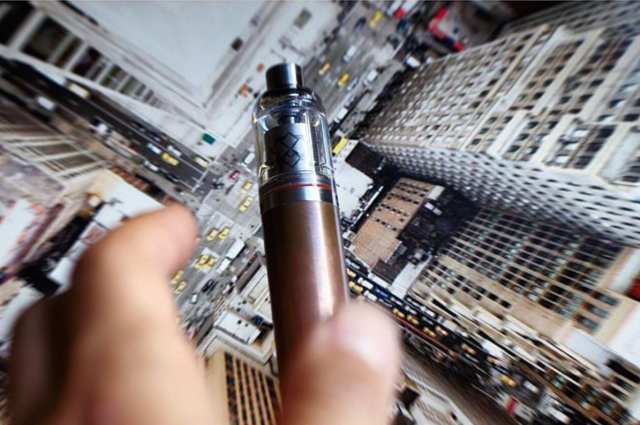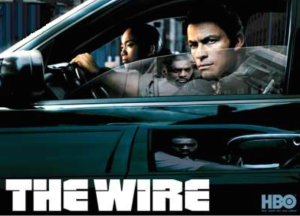Far too often I hear and the classification terms of “vape and e-Cig” being thrown around like they’re synonymous. Publications ranging from scientific journals to the New York Times have all failed to properly differentiate between the two archetypal devices, whose functionally, design and ownership render them all but incomparable.
Now I’m not being some snobby-elitist-country club-lounging-douche trying to correct your pronunciation of that “all the rage” Milan designer. These two types of nicotine transfer devices are vastly different in functionality and are also owned by two different sectors of the market.
(For purposes of clarity the following contrasts are the “general” differences between the two genres of nicotine transfer devices. Naturally there are further categorizations that could be made i.e. vape pens, personal vaporizers, APVs, mods and mechanical mods, but I’m going to simplify the categories into their two parent genres; vapes and e-Cigs.)
E-Cigs are largely owned by “Big Tobacco,” whether it’s RJ Reynolds and VUSE, or Imperial Tobacco Group and Blu. Contrarily, vapes are largely manufactured and owned by the small business sector. There are generally no parent corporations producing multiple brands of mods under the same umbrella. Is McDonalds really comparable with your local burger joint? Yes, they each sell burgers just like vapes and e-Cigs transfer nicotine, but both entities are able to achieve their desired effect in differing ways.
E-Cigs contain “built-in” atomizers, which do not allow for the individual to re-build or manipulate them in order to affect the specific “hit” that they are seeking. Additionally, e-Cigs come with flavor cartridges that cannot be filled with outside or independent e-Juice. There are virtually no customization options for e-Cigs, which in part is a legislation piece that tobacco companies have tried to capitalize on. The closest analogy that comes to mind is a stock automobile versus a custom one. Naturally there are independently sold items that can illegally be placed inside a vehicle to make it more powerful. E-Cig companies argue that by making built-in atomizers and pre-filled flavor cartridges, they are able to regulate the quality and purity of their products and then they can market them on television for children to see.
Vapes contain “rebuildable” atomizers, which allow for the individual to select their specific build by utilizing coils, wick and the number of posts contained within their atomizer. Some builds are geared towards producing greater clouds, or greater flavor, depending on the individuals specific usage and preference. Vapes in general are extremely customizable, meaning that different parts from different companies can be comprised within the same device. For instance; I could have a Rig Mod base with a Roughneck atomizer, or any other combination I could fathom. The customization doesn’t stop at switching out different mechanisms, it also stretches to the actual e-Juice that the individual wants to toy with. There are thousands of independent e-Juice brands, all of which can be used to flavor your wick; two at a time, three at a time, mix nicotine levels, whatever you want you can have. Vapes can be looked at as the Wild West, where in which virtually anything goes so long as you know the theory behind it.
Additionally to the differences described above, effectiveness is a key contrast. E-Cigs are generally not powerful, or hell, not cool enough to keep the smoker away from traditional analog cigarettes. My first experience with e-Cigs came from a mall kiosk back in 2009. The device barely hit hard at all and I blew through a $20 cartridge in less than a day. Needless to say my $100 investment failed miserably as I marched down to J.J.’s Liquor Store to get some goddamn Reds.
In 2012 I was introduced to vaping, though be it the most basic of the bunch; a lowly eGo-C Twist. The hit was stronger, battery lasted longer, bigger clouds and the flavor selections were endless. I haven’t had a cigarette since.
My point is that even the weakest vape is 50 times superior to the best e-Cig. I, like many others, failed to quit with e-Cigs but succeeded when using a vape. My eGo-C Twist planted a seed that finally blossomed a month later when I saw that there were even better options available; goodbye tank, hello drip. I’ve been madly in love ever sense.
It’s insulting and downright confusing when I see the terms “vape and e-Cig” used interchangeably. When I read a study about the effects or findings of “e-Cigarette use” are they referring to vapes or e-Cigs because none of them specify anything. This in turn leads to misinformation, more bullshit and the commoner thinking that they’re all equal in the grand scheme of things.
As a former-journalist it really gets to me how the majority of the media has failed to research proper terminology and the differing attributes between the two nicotine-transfer devices. Have I seen a primetime commercial on television for a Blu e-cigarette? Yes. Have I ever seen one for a vape-related product? No, so don’t lump us all into the same marketing category that could be construed as gearing their message towards children. California State Senator Barbara Boxer issued an open letter to the five largest e-cigarette companies in the U.S. about advertising their products on television. I ask again, have you ever seen a commercial for a vape product on television?
The distinction must be made by vape and e-Juice companies alike that we are not affiliated with e-Cigs in any way shape or form. Once the playing field is segmented the public can see that only one entity advertises on television and only one entity is vastly effective as a smoking cessation device.
*Special Thanks To @Jordan_UrbanVapors For The Dope Picture






